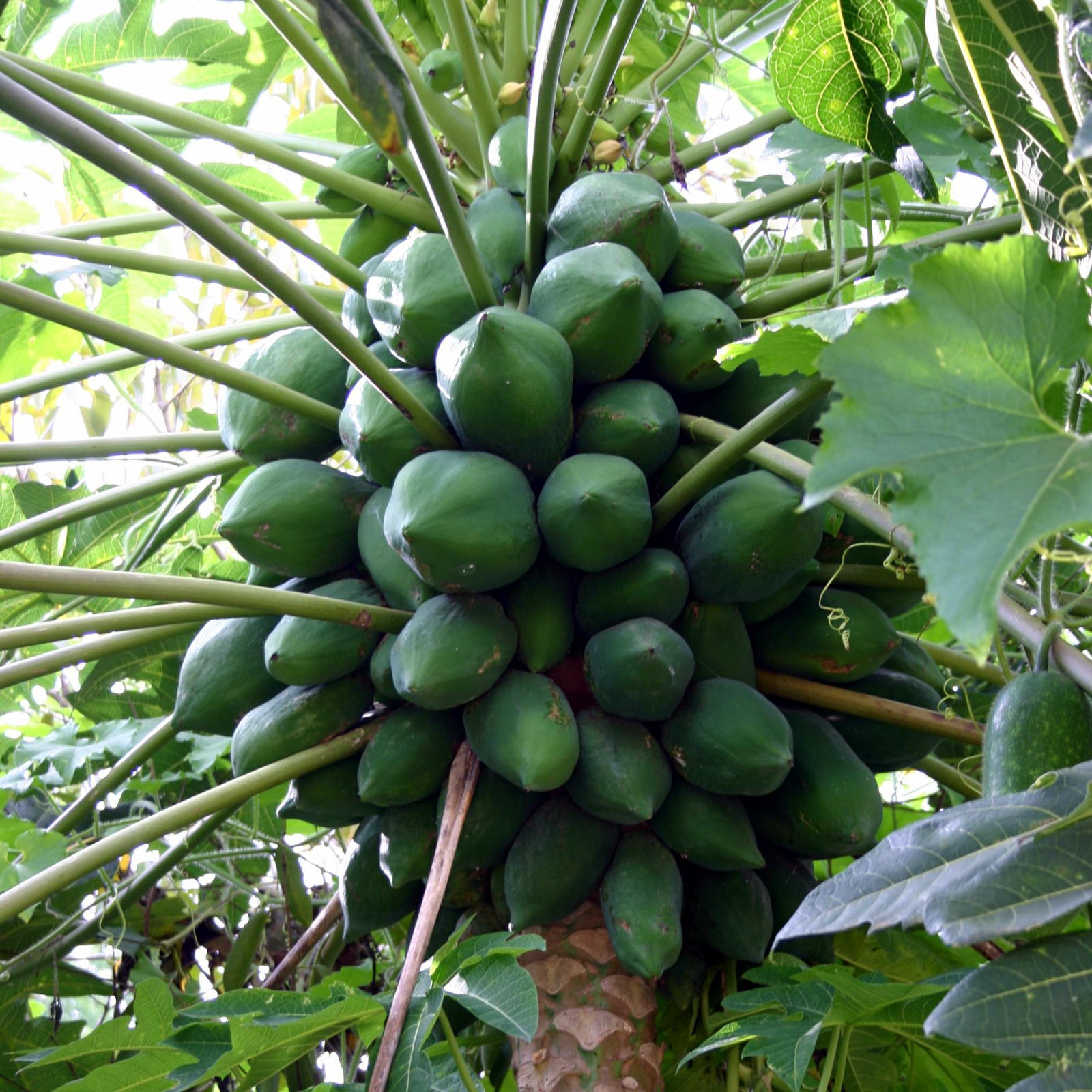Papaya, or malagaw in Thai, is another imported fruit that has found a key place in Thai cuisine. The tree was first described by a Spanish chronicler name Oviedo in 1526 as found along the coasts of present day Panama and Columbia. The abundant seeds of the fruit are viable for up to three years, which allowed the fruit to be easily spread throughout the tropics. By the end of the sixteenth century the Spanish and Portuguese had spread the papaya to their colonies in India, Malacca and the Philippines.

Papaya are rich in vitamins A and C as well as potassium. The skin as well as the core of the green fruit is rich in a protein-digesting enzyme called papain. It makes a very good natural meat tenderizer and is much used in Thailand, especially on local beef which traditionally has been quite tough. However, it’s over-use results in the meat taking on a rubbery texture that can be quite odd in the mouth.
The papaya tree can look a little like a palm and grows to about eight meters (26 feet) tall. It grows easily in Thailand’s tropical climate, and you will often see trees sprouting up around construction sites and compost heaps. The leaves can be quite large and are deeply lobed. The fruit is quite large, about the size and shape of musk melons. The meat of the ripe fruit is dark orange and like melons or squash, at the center is a cluster of loosely connected black seeds the size of peas.
Some find the smell of papaya a little objectionable, and it is common practice the squeeze a bit of lime juice onto the fruit to kill the smell before eating.